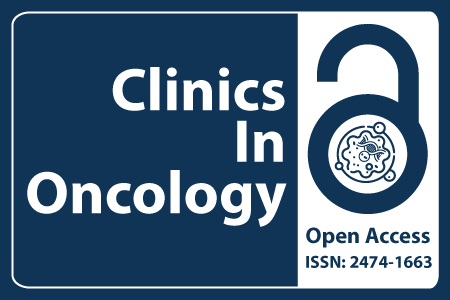
Journal Basic Info
**Impact Factor calculated based on Google Scholar Citations. Please contact us for any more details.Major Scope
- Gastrointestinal Cancer
- Radiation Oncology
- Lymphoma
- Sarcomas
- Kidney Cancer
- Colon Cancer
- Chemotherapy and Radiotherapy
- Breast Cancer
Abstract
Citation: Clin Oncol. 2019;4(1):1574.DOI: 10.25107/2474-1663.1574
Which to Choose? Surgery or Upper GI Endoscopy in Symptomatic Gallstones
Chandio A, Naqvi SA, Sabri S, Aftab F, Abbasi M, Shaikh Z, Chandio K, Soomro F and Memon A
Department of Surgery, Tameside NHS Foundation Trust Hospital, UK
Department of Surgery, Mallow General Hospital, Co.Cork, Ireland Republic
Department of Surgery, Liaquat University of Medical & Health Sciences, Jamshoro, Pakistan
Department of Surgery, haheed Mohtarama Benazir Bhutto Medical University & Chandka Medical College Larkana, Pakistan
PDF Full Text Research Article | Open Access
Abstract:
Background: Gallstones are common; they do not cause any symptoms in many people. About one in three people with gallstones develop symptoms (symptomatic).There are wide range of gastrointestinal symptoms have been linked to gallstones but causal relationship has not been established yet. It has always been a challenge to differentiate between upper gastrointestinal symptoms due to gall stones or any other causes. There is conflicting evidence that preoperative Gastroscopy is useful in identifying medically treatable diseases in patients undergoing Cholecystectomy.Aim: To evaluate significance of Upper GI endoscopy as a pre-operative investigative tool in symptomatic gallstones.Methods: Prospective observational multicentre study of 433 patients undergoing Laparoscopic cholecystectomy from December 2014 to November 2016. All patients diagnosed with gallstones based on ultrasound abdomen, irrespective of age and sex. All patients were subjected to Upper Gastrointestinal Endoscopy 24 hr to 48 hrs before cholecystectomy biopsies were obtained for histopathology if required. Patients decline surgeries, pregnant ladies, CBD stone, obstructive jaundice, carcinoma of gall bladder, were excluded.Results: During this period, 433 patients. The female to male ratio 3.5:1 (337 vs. 96), and the mean patient age was 45.10 ± 6.31 years (21 to 65 years). 266 (61.78%) Patients were present with atypical pain and 167 (38.21%) typical pain. Ultrasound revealed multiple stones 335(77.36%), single stone 98 (22.63%), impacted stone at the neck of gallbladder was found in 76 (17.55%) patients, Thick wall gallbladder was seen in 247 (57.04%) patients and contracted gallbladder 51 (11.77%) patients. Pre-operative upper gastrointestinal endoscopy findings revealed gastritis in 108 (24.94%), gastric ulcer 55 (12.70%), duodenal ulcer in 44 (10.16%), GERD in 31 (7.15%), Esophagitis in 37 (8.54%) cases, polyps 21 (4.84%) and carcinoma of stomach 9 (2.07%). In all patients with typical pain complete relief of symptoms were observed within 13 days post- operatively. Out of 266 (61.43%) cases with a typical pain had persistence of symptoms in 157 (59.02%) cases up to four months.Conclusion: We recommend that upper gastrointestinal endoscopy should be performed preoperatively in patients with nonspecific upper abdominal pain and history of peptic ulcer disease.
Keywords:
Cholecystectomy; Cholelithiasis; Gastroscopy
Cite the Article:
Chandio A, Naqvi SA, Sabri S, Aftab F, Abbasi M, Shaikh Z, et al. Which to Choose? Surgery or Upper GI Endoscopy in Symptomatic Gallstones. Clin Oncol. 2019; 4: 1574.













